Complete Solutions to Exercise (Linked Comprehension) of chapter REDUCTION AND OXIDATION REACTION OF ORGANIC COMPOUNDS of Class 12 book with complete answers and questions
| Class 12 | CHEMISTRY |
| Chapter | REDUCTION AND OXIDATION REACTION OF ORGANIC COMPOUNDS |
| CENGAGE CHEMISTRY | Exercise (Linked Comprehension) |
| Number Of Questions | 52 |
| Academic Year | 2023-24 |
(A) `A(C_(7)H_(14)) overset(O_(3)//Red)(rarr)B(C_(3)H_(6)O)+C`
(B) Gives positive Tollens test but negative iodform test.
(C ) Give negative Tollens test but positive iodoform test.
The compound (A) is:
View Solution(A) `A(C_(7)H_(14)) overset(O_(3)//Red)(rarr)B(C_(3)H_(6)O)+C`
(B) Gives positive Tollens test but negative iodform test.
(C ) Give negative Tollens test but positive iodoform test.
The compound (B) is:
View Solution(A) `A(C_(7)H_(14)) overset(O_(3)//Red)(rarr)B(C_(3)H_(6)O)+C`
(B) Gives positive Tollens test but negative iodform test.
(C ) Give negative Tollens test but positive iodoform test.
The compound (C ) is:
View Solution(A) `A(C_(7)H_(14)) overset(O_(3)//Red)(rarr)B(C_(3)H_(6)O)+C`
(B) Gives positive Tollens test but negative iodform test.
(C ) Give negative Tollens test but positive iodoform test.
The compound (B) can be converted to (C ) by using the reagents:
View Solution(A)`(C_(8)H_(14))underset(Acidic KMnO_(4))overset([O])(rarr)(B)+(C )+(D)`
(A) requires `2 mol` of `H_(2)` for its saturation.
(B) reduces ammoniacal `AgNO_(3)` and gives yellow colour with `NaOH+I_(2)`.
(C ) does not reduce Tollens reagent but gives iodoform test.
(D) on dehydration with conc. `H_(2)SO_(4)` gives a mixture of colourless gases.
The compound (A) is:
View Solution(A)`(C_(8)H_(14))underset(Acidic KMnO_(4))overset([O])(rarr)(B)+(C )+(D)`
(A) requires `2 mol` of `H_(2)` for its saturation.
(B) reduces ammoniacal `AgNO_(3)` and gives yellow colour with `NaOH+I_(2)`.
(C ) does not reduce Tollens reagent but gives iodoform test.
(D) on dehydration with conc. `H_(2)SO_(4)` gives a mixture of colourless gases.
The compound (B) is:
View Solution(A)`(C_(8)H_(14))underset(Acidic KMnO_(4))overset([O])(rarr)(B)+(C )+(D)`
(A) requires `2 mol` of `H_(2)` for its saturation.
(B) reduces ammoniacal `AgNO_(3)` and gives yellow colour with `NaOH+I_(2)`.
(C ) does not reduce Tollens reagent but gives iodoform test.
(D) on dehydration with conc. `H_(2)SO_(4)` gives a mixture of colourless gases.
The compound (C ) is:
View Solution(A)`(C_(8)H_(14))underset(Acidic KMnO_(4))overset([O])(rarr)(B)+(C )+(D)`
(A) requires `2 mol` of `H_(2)` for its saturation.
(B) reduces ammoniacal `AgNO_(3)` and gives yellow colour with `NaOH+I_(2)`.
(C ) does not reduce Tollens reagent but gives iodoform test.
(D) on dehydration with conc. `H_(2)SO_(4)` gives a mixture of colourless gases.
The compound (D) is:
View Solution(A)`(C_(8)H_(14))underset(Acidic KMnO_(4))overset([O])(rarr)(B)+(C )+(D)`
(A) requires `2 mol` of `H_(2)` for its saturation.
(B) reduces ammoniacal `AgNO_(3)` and gives yellow colour with `NaOH+I_(2)`.
(C ) does not reduce Tollens reagent but gives iodoform test.
(D) on dehydration with conc. `H_(2)SO_(4)` gives a mixture of colourless gases.
The mixture of colourless gases is:
View Solution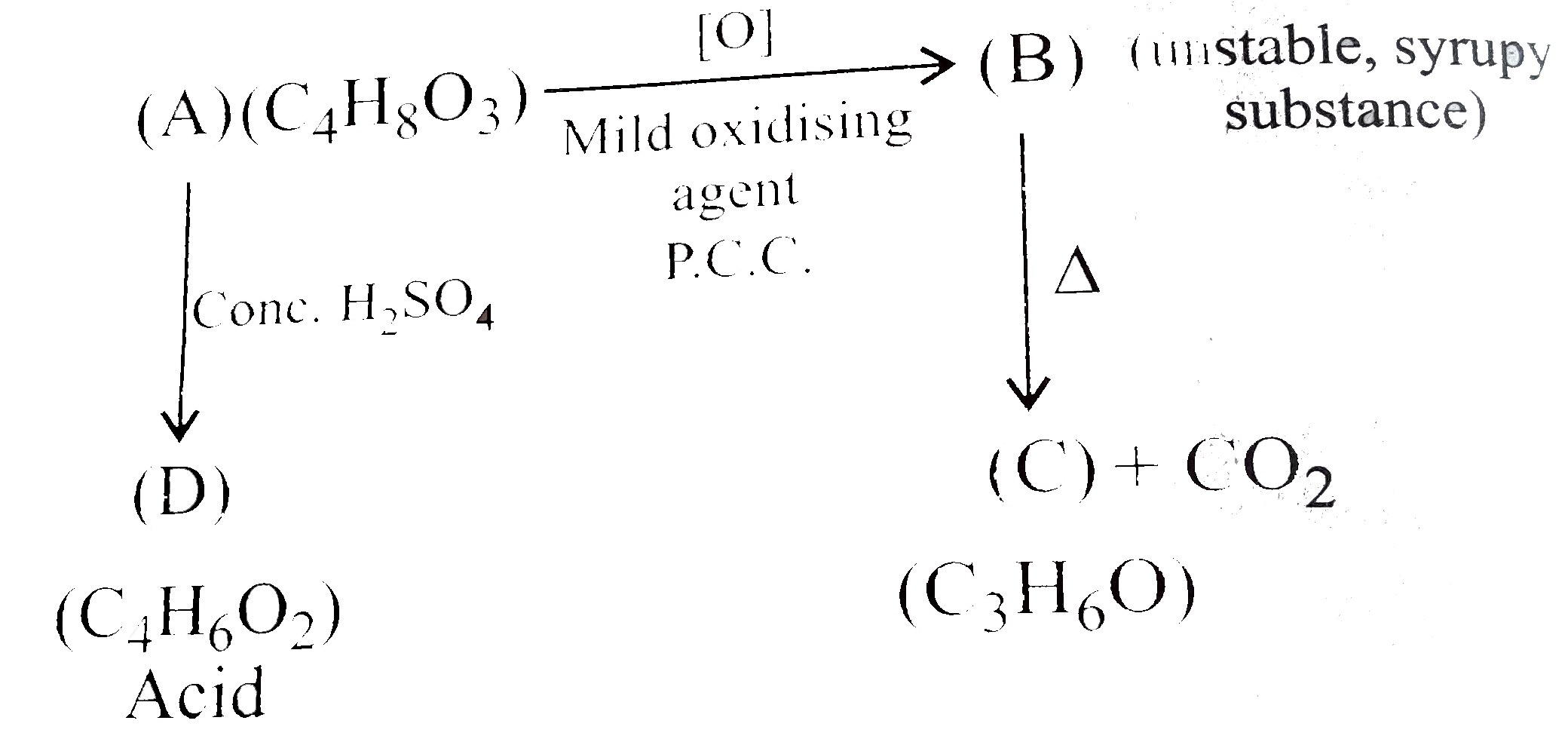
The compound (A) is:
View Solution
The compound (B) is:
View Solution
The compound (C ) is:
View Solution
The compound (D) is:
View Solution
View Solution(A)`(C_(9)H_(12)O)underset(Hot KMnO_(4))overset([O])(rarr) PhCOOH`
i. (A) does not decolourise `Br_(2)` in `C Cl_(4)`, reacts with Na to give a colourless and odourless gas (B).
ii. (A) does not give iodoform test.
iii. (A) is a chiral compound and oxidation of (A) with `CrO_(3)//Py` gives a chiral compound (C ).
iv. The colour of `Cr_(2)O_(7)^(2-)` change to blue-green when added to compound (A).
The structure of compound (A) is:
View Solution(A)`(C_(9)H_(12)O)underset(Hot KMnO_(4))overset([O])(rarr) PhCOOH`
i. (A) does not decolourise `Br_(2)` in `C Cl_(4)`, reacts with Na to give a colourless and odourless gas (B).
ii. (A) does not give iodoform test.
iii. (A) is a chiral compound and oxidation of (A) with `CrO_(3)//Py` gives a chiral compound (C ).
iv. The colour of `Cr_(2)O_(7)^(2-)` change to blue-green when added to compound (A).
The colourless and odourless gas (B) is:
View Solution(A)`(C_(9)H_(12)O)underset(Hot KMnO_(4))overset([O])(rarr) PhCOOH`
i. (A) does not decolourise `Br_(2)` in `C Cl_(4)`, reacts with Na to give a colourless and odourless gas (B).
ii. (A) does not give iodoform test.
iii. (A) is a chiral compound and oxidation of (A) with `CrO_(3)//Py` gives a chiral compound (C ).
iv. The colour of `Cr_(2)O_(7)^(2-)` change to blue-green when added to compound (A).
The compound (C ) is:
View Solution(A)`(C_(9)H_(12)O)underset(Hot KMnO_(4))overset([O])(rarr) PhCOOH`
i. (A) does not decolourise `Br_(2)` in `C Cl_(4)`, reacts with Na to give a colourless and odourless gas (B).
ii. (A) does not give iodoform test.
iii. (A) is a chiral compound and oxidation of (A) with `CrO_(3)//Py` gives a chiral compound (C ).
iv. The colour of `Cr_(2)O_(7)^(2-)` change to blue-green when added to compound (A).
The colour of `Cr_(2)O_(7)^(2-)` changes from orange to blue-green when added to compound (A). The blue-green colour is due to the formation of:
View Solution
The compound (C ) is:
View Solution
The compound (F) is:
View Solution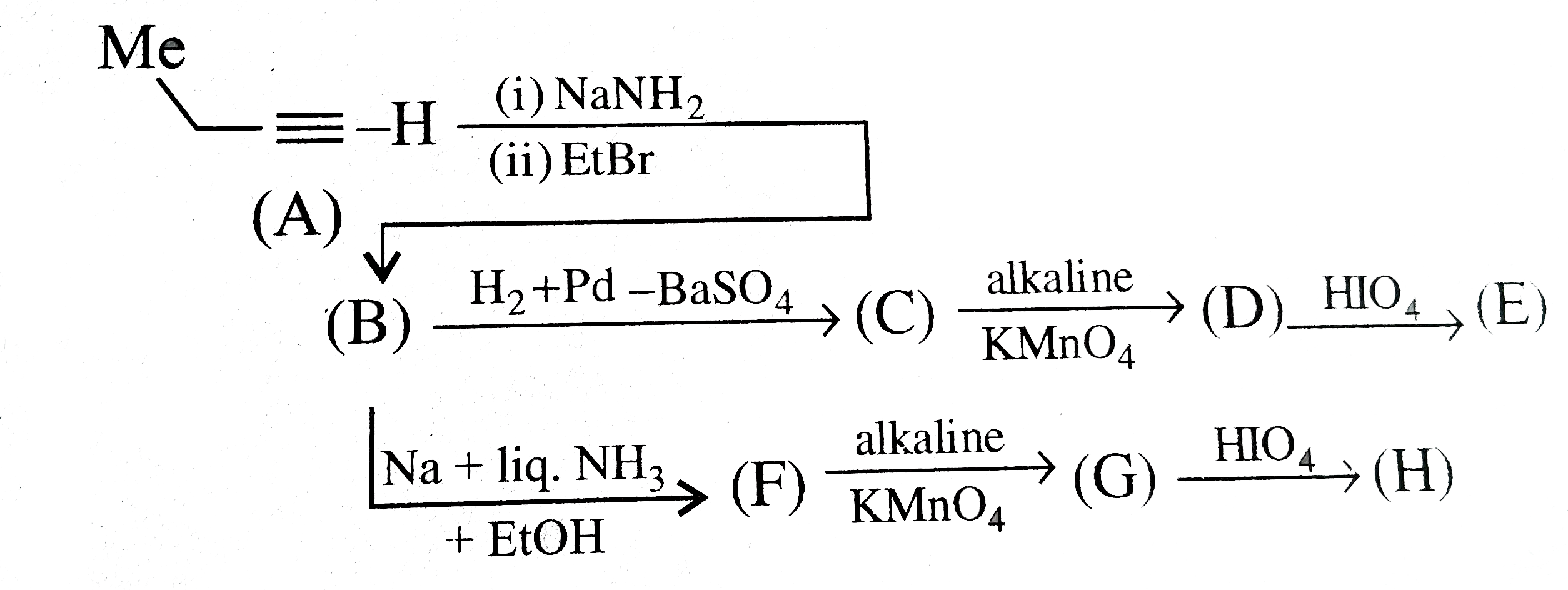
The compound (D) is:
View Solution
The compound (G) is:
View Solution
The compound (E) is:
View Solution
The compound (H) is:
View Solution
The compound (C ) is:
View Solution
The compound (D) is:
View Solution
The compound (E) is:
View Solution
In the formation of compoud (E) from (A), the name of the reaction is:
View Solution
The compound (F) is:
View Solution
The compound (B) is:
View Solution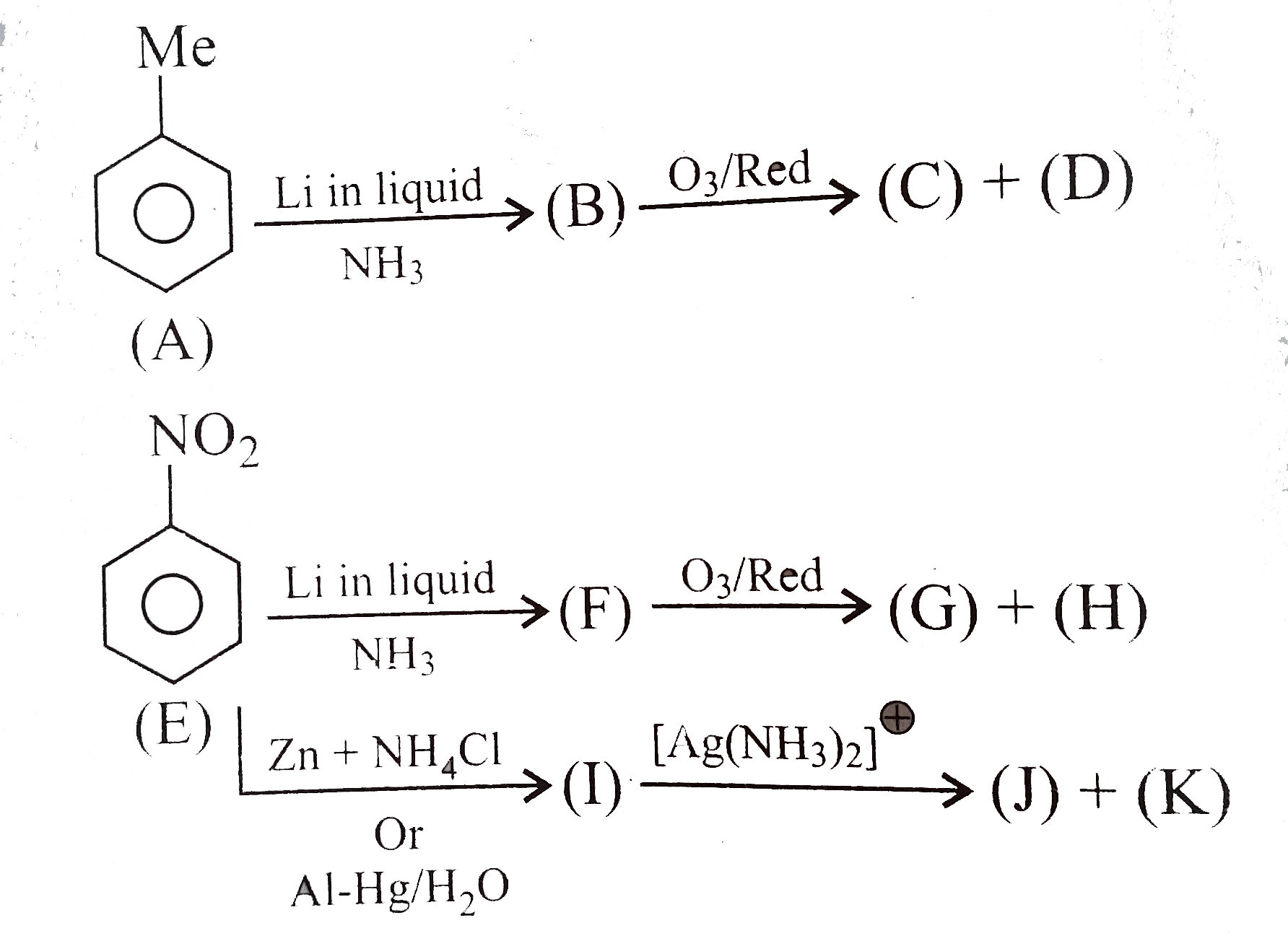
The compound (C ) and (D), respectively, are:
View Solution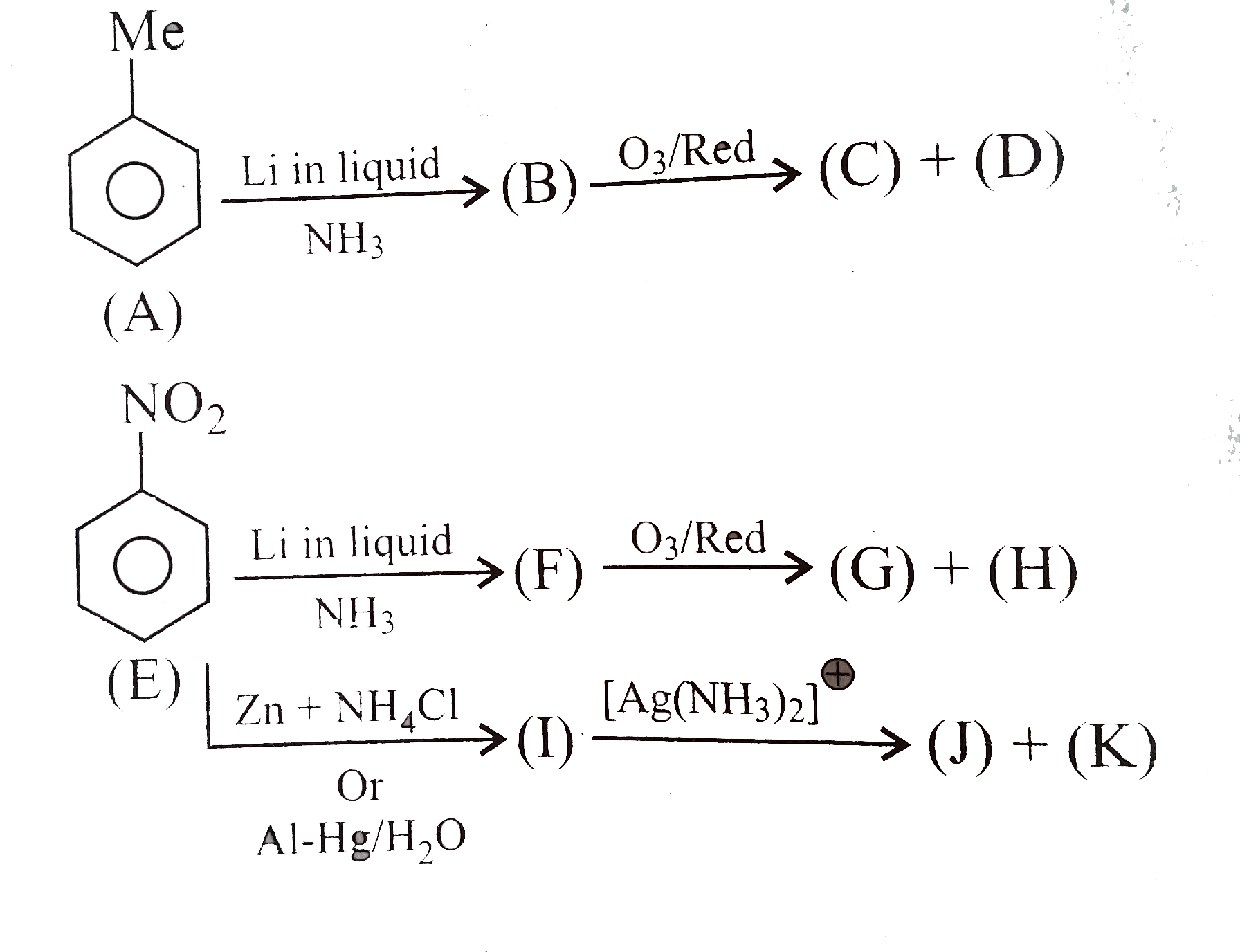
The compound (F) is:
View Solution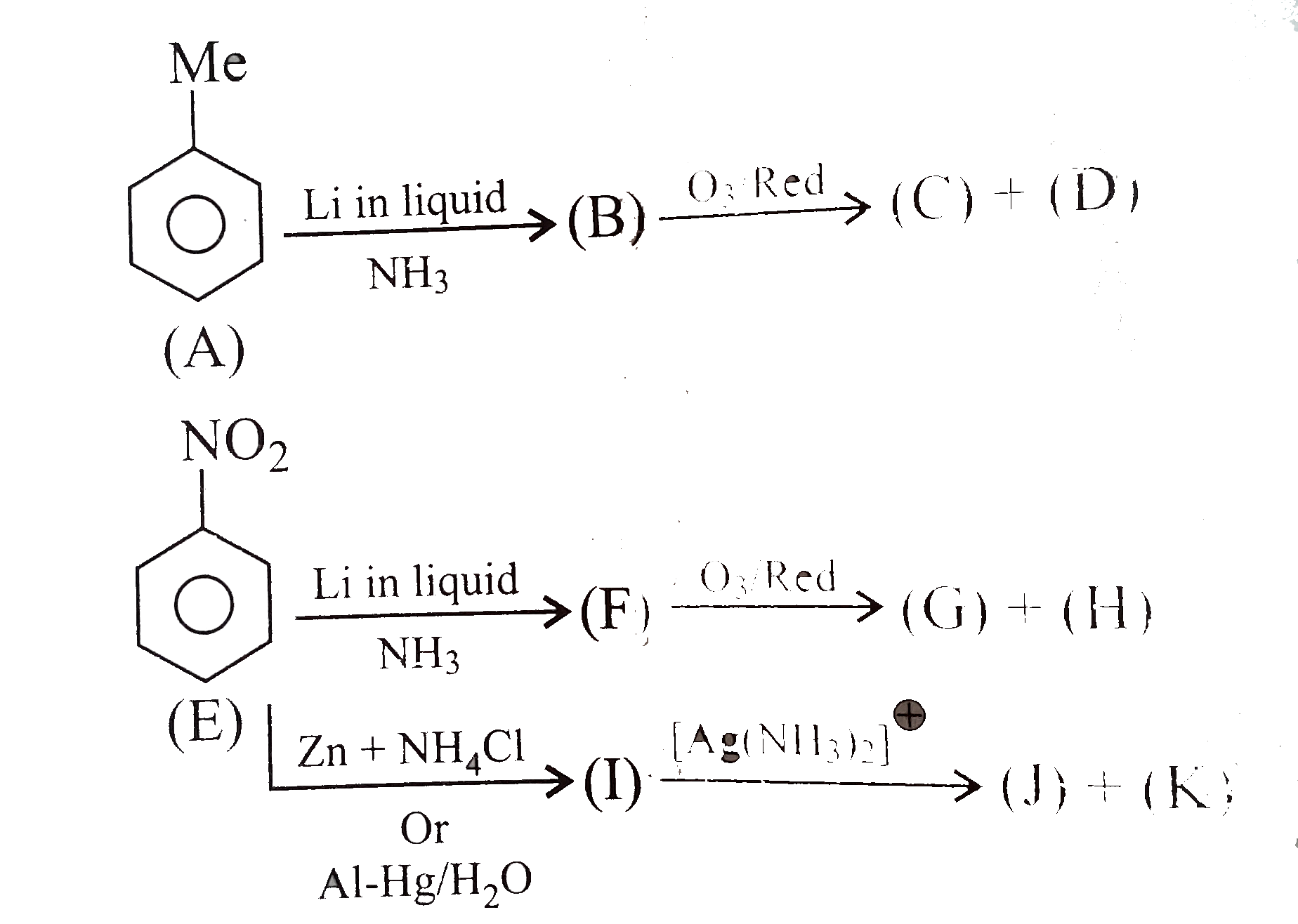
The compound (G) and (H), respectively, are:
View Solution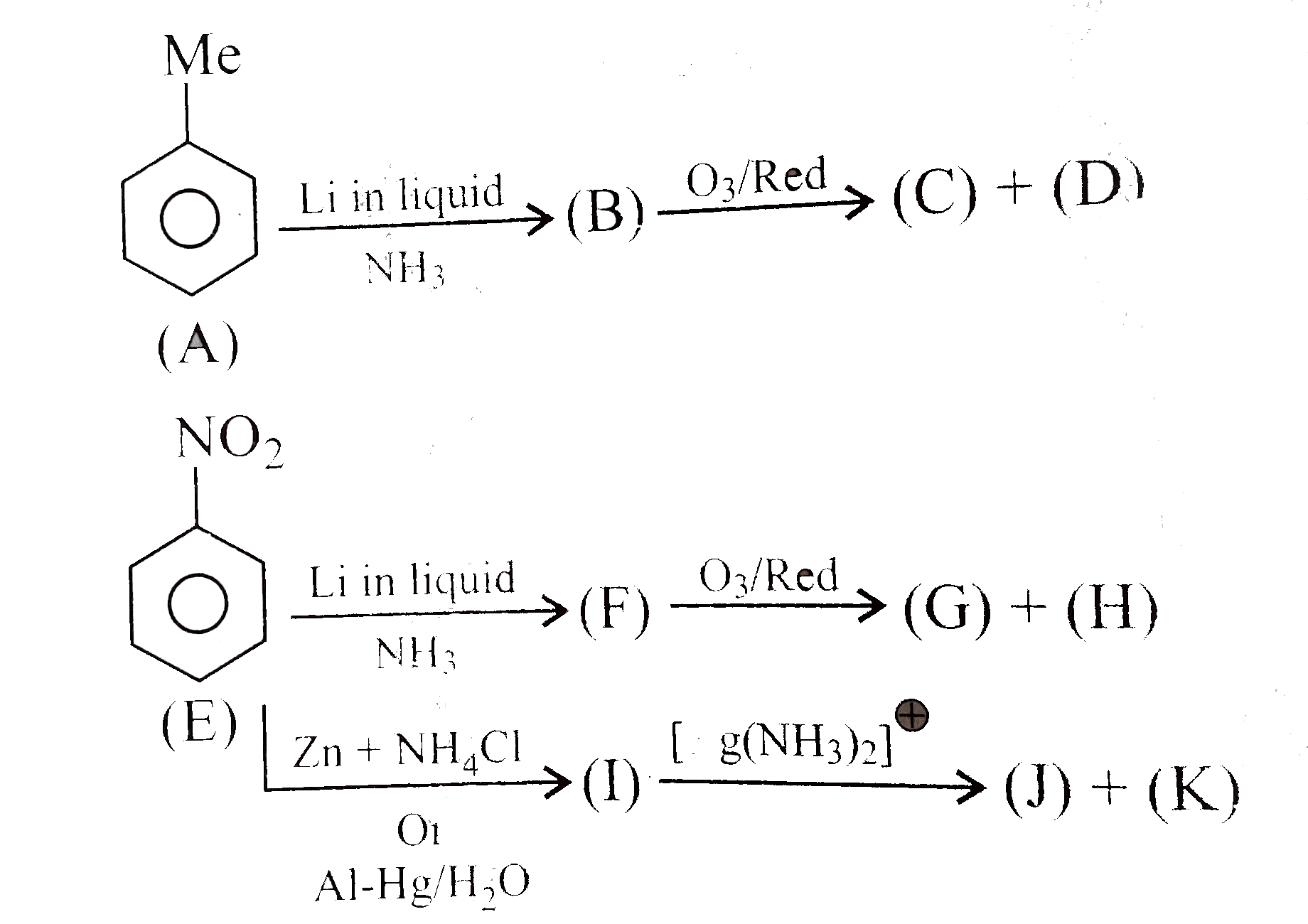
The compound (I) is:
View Solution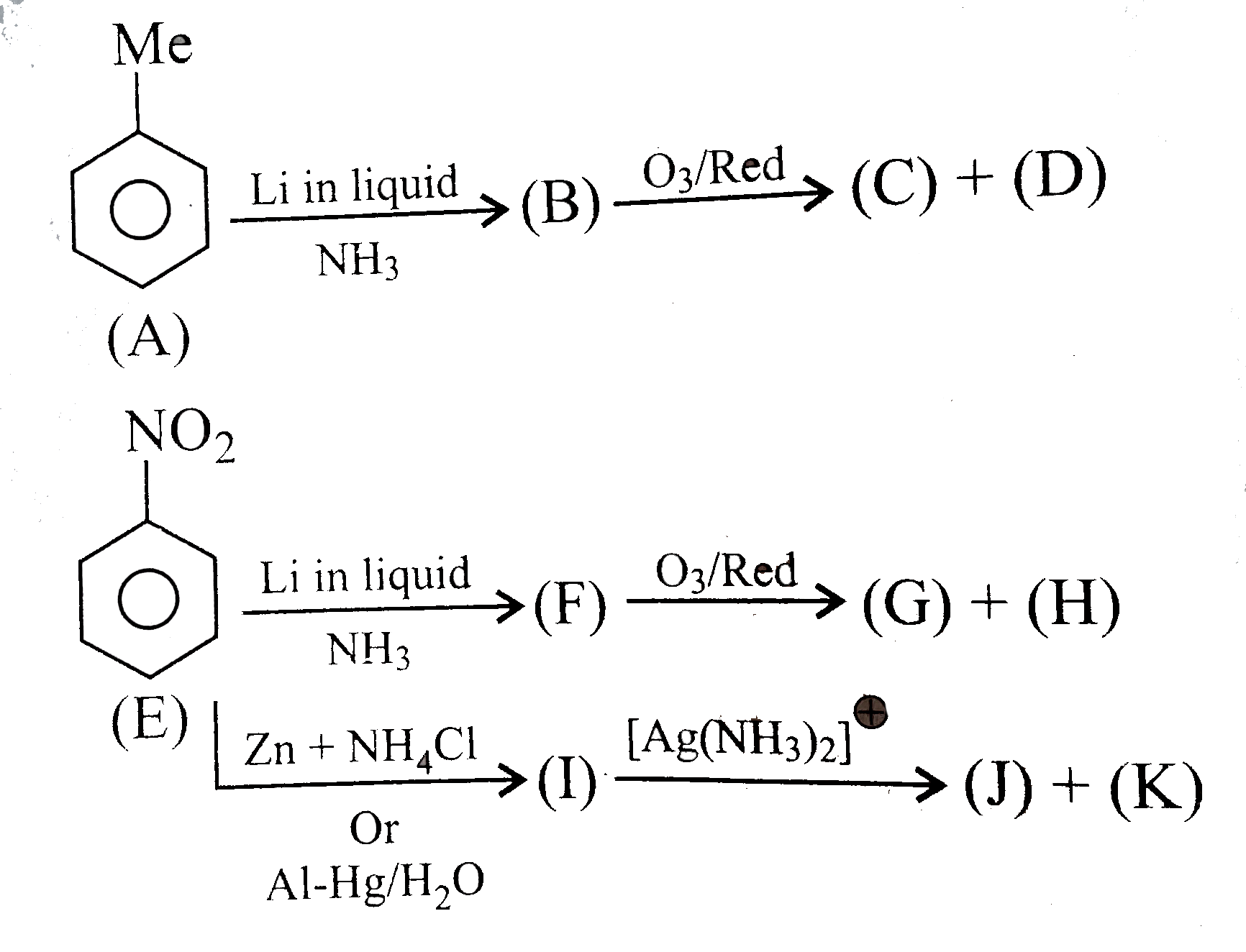
The compound (J) and (K), respectively, are:
View Solution
The compound (A) is:
View Solution
The red colour of compound (B) is due to the formation of:
View Solution
The deep green colour of compound (C ) is due to the formation of:
View Solution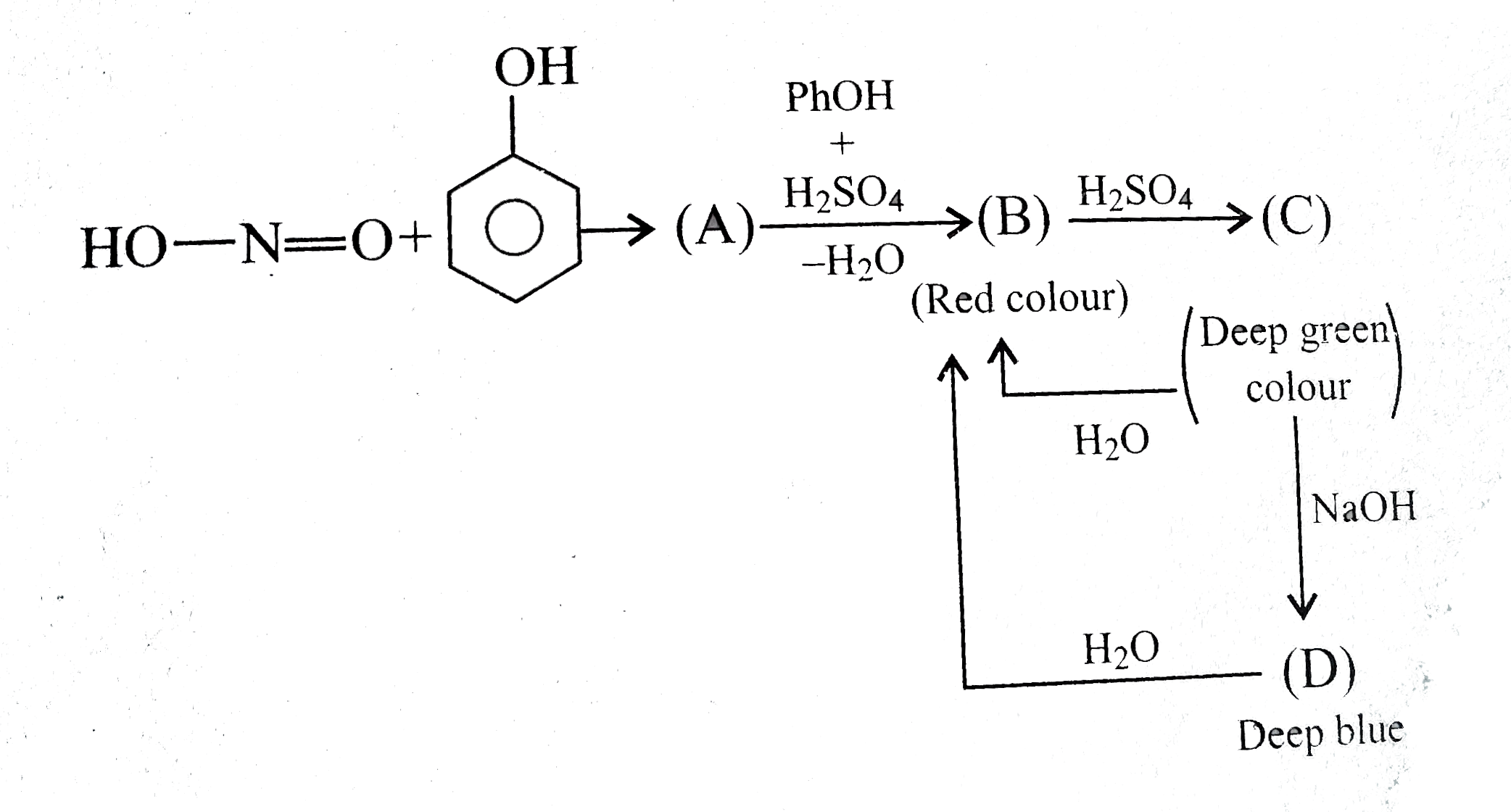
The deep blue colour of compound (D) is due to the formation of:
View Solution
The formation of different-colour compounds (B), (C ), and (D) from (A) is called:
View Solution
The compound B is:
View Solution
The compound (C ) and the reaction involving the conversion of (B) to (C ) are:
View Solution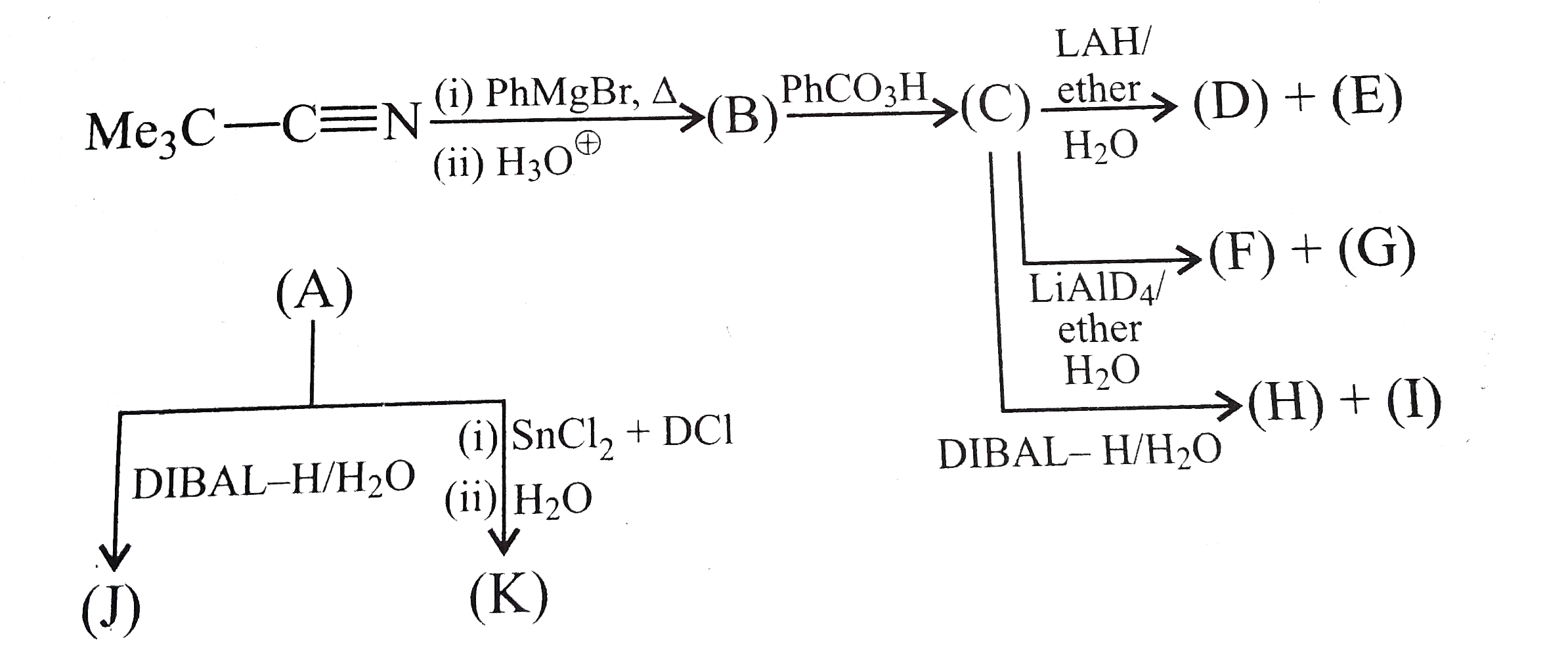
The compounds (D) and (E) respectively are:
View Solution
The compounds (F) and (G), repectively, are:
View Solution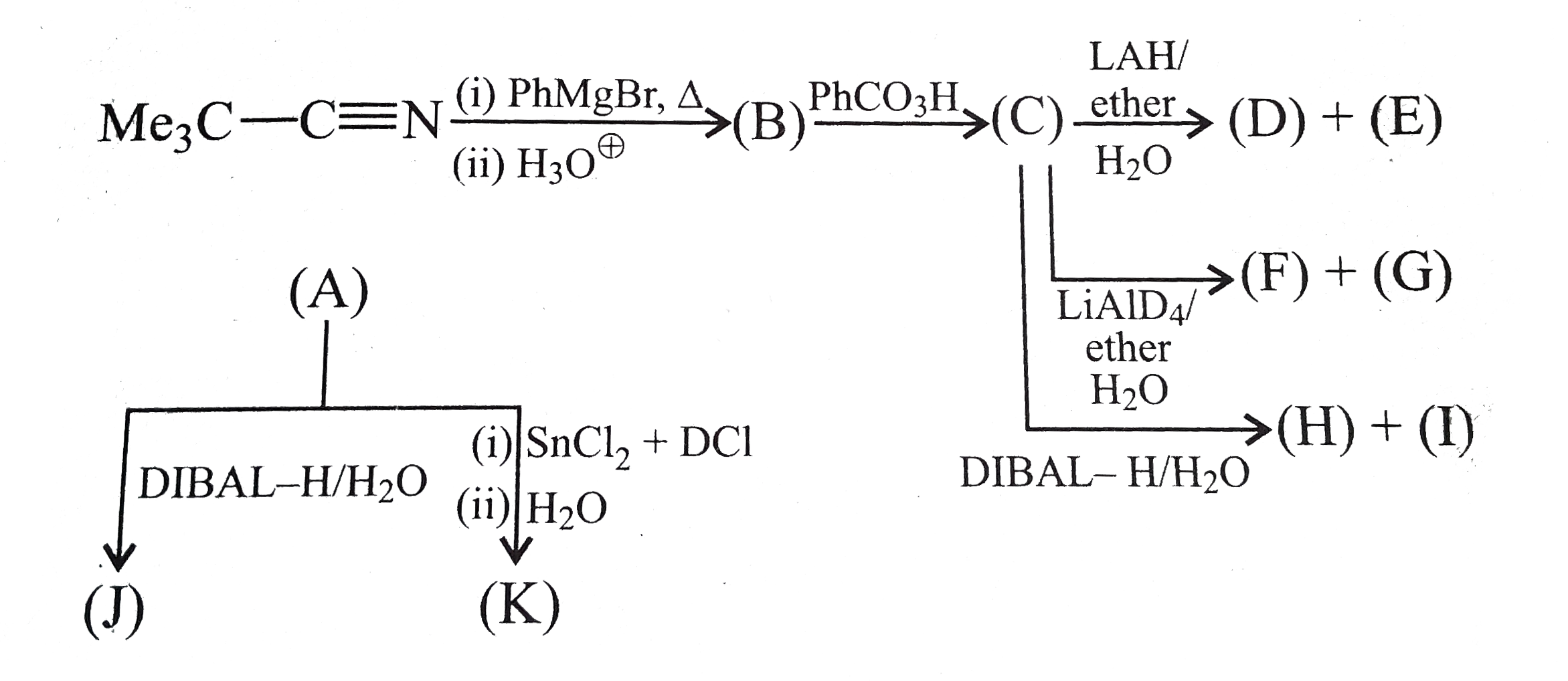
The compounds (H) and (I), repectively, are:
View Solution
The compounds (J) is:
View Solution
The compounds (K) is:
View Solution
The compounds (A) is:
View Solution
The compounds (B) and (C ), respectively, are:
View Solution
The compounds (D) is:
View Solution
The compounds (E) is:
View Solution
The compounds (F) are (G), resprctively, are:
View Solution
Exercise (Linked Comprehension) questions and complete solutions for chapter REDUCTION AND OXIDATION REACTION OF ORGANIC COMPOUNDS of CENGAGE CHEMISTRY (ENGLISH) of Class 12